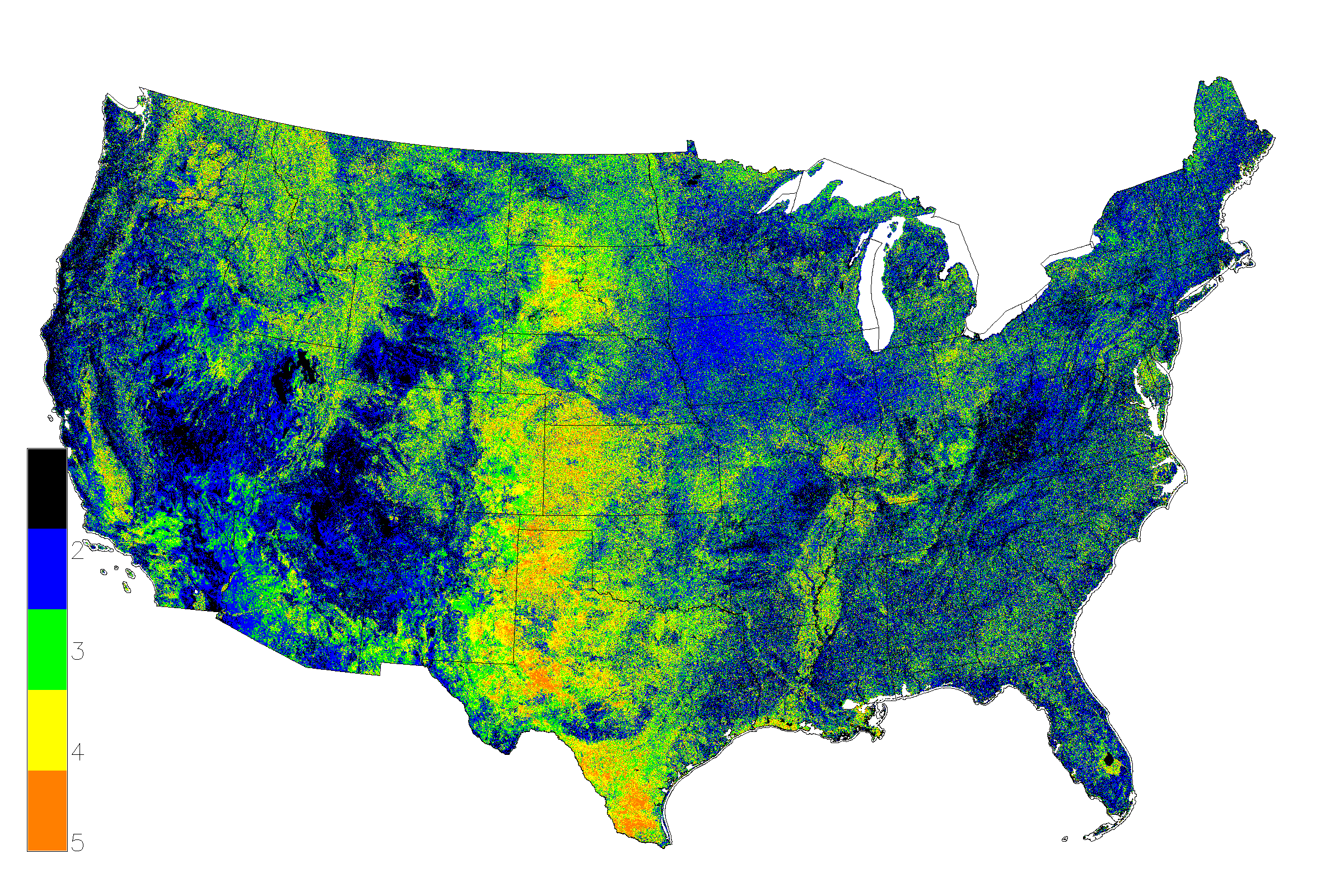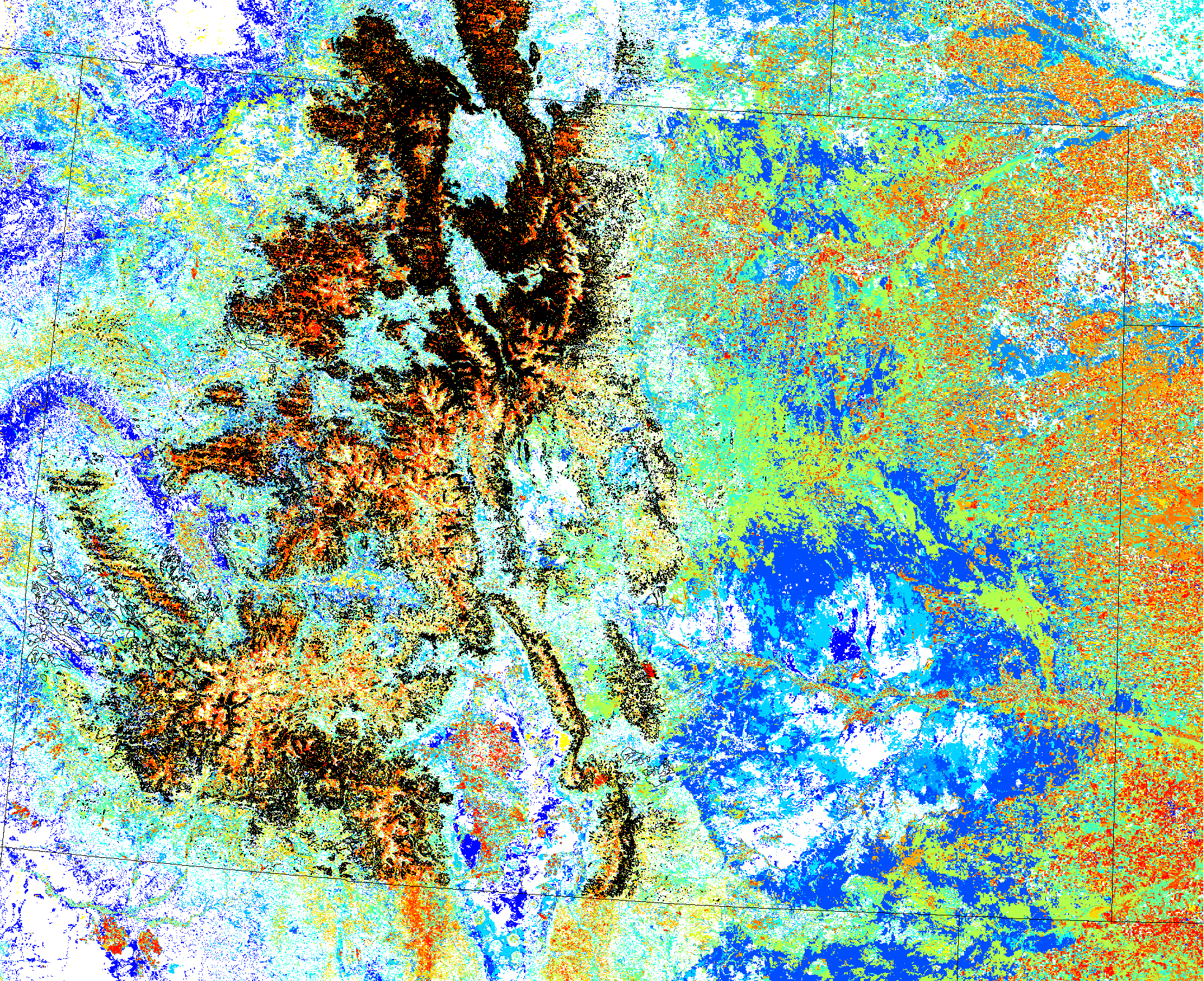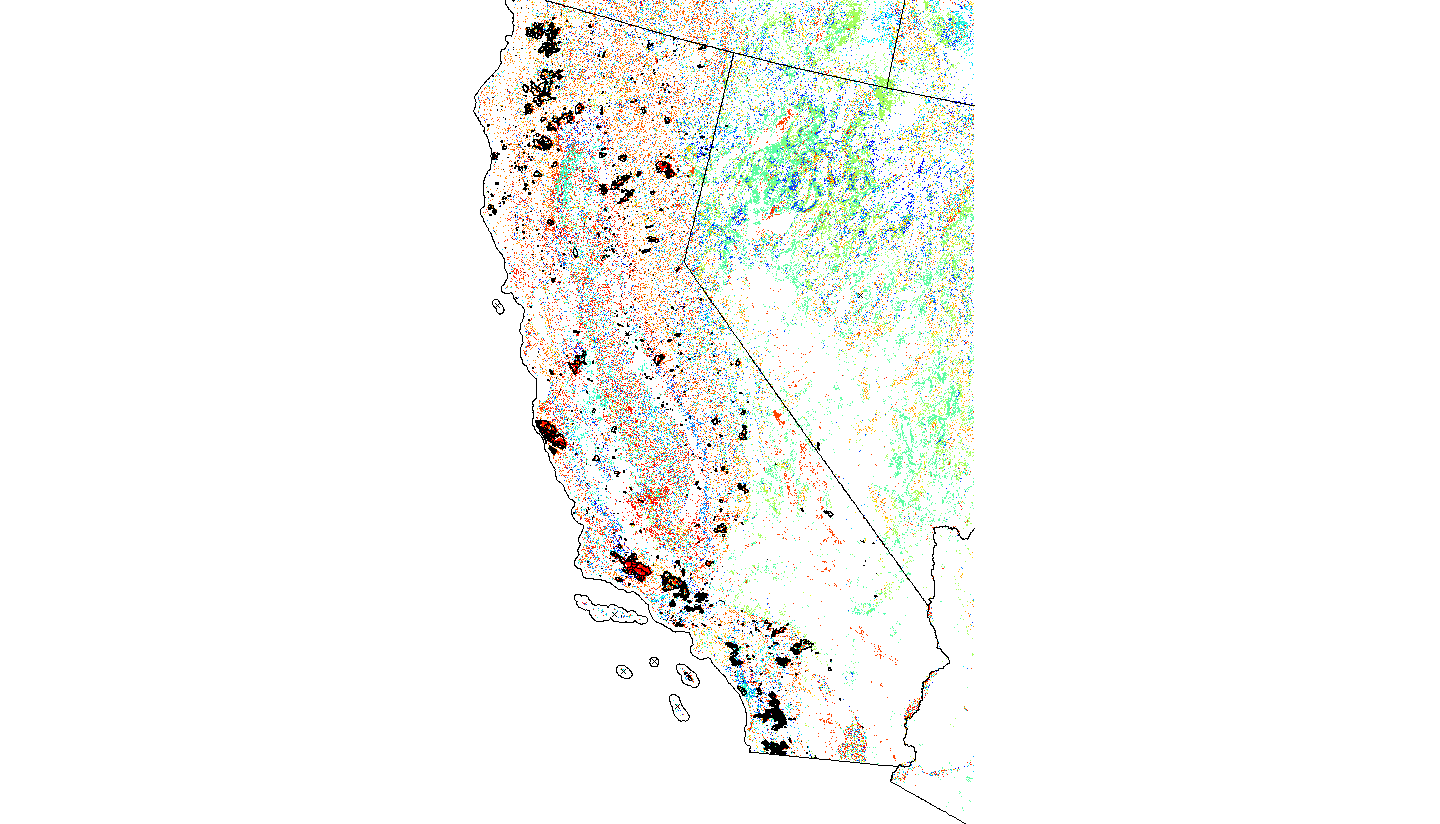| Jitendra (Jitu) Kumar |
Evolutionary strategies based method for generating alternatives
Parallel evolutionary algorithms based method for generating alternative using grid computing
Contaminant source characterization in water distribution systems
Modeling of hydrological processes using conceptual and data-driven approaches
Estimation of ground water pollution source location using artificial neural networks
|
The ForWarn Early Warning System produces sets of national maps showing potential forest disturbances at 231m resolution every 8 days, and posts the results to a web Assessment Viewer for examination. The EFETAC/WWETAC ForWarn system provides a strategic national overview of potential forest disturbances, identifying and directing attention and resources to locations whose forest behavior seems unusual or abnormal. The purpose of ForWarn is to alert, focus and direct ground and aircraft observation efforts, resulting in maximum utility and effectiveness. It has been operating continuously since January 2010, and results show ForWarn to be a robust and highly capable tool for detecting changes in forest conditions. 
Geospatiotemporal cluster analysis of long term MODIS derived NDVI data sets for the identification of disturbances in forest ecosystems. 
Phenology map of Continental United States for 2009 
Persistence of phenology regimes during 2006-2009 period (Black(0): No change Red(4): Change in regimes four times during 2006-2009) 
Identification of Mountain Pine Beetle infected areas in Colorado 
Identification of California wild fires Evolutionary Strategies based Method for Generating Alternatives Documentation for the new serial C implementation of Evolutionary Strategies based method for Generating Alternatives can be found here. This implementation is specific for solving the water distribution system contaminantion source identification problem. It's an multiple population evolutionary optimization algorithm which couples with the simulation model EPANET. A parallel version of EPANET (pEPANET) developed by our research group member Sarat, is being used which uses multiple processors for the evaluation of the individuals in the evolutionary optimization model. Click here for Documentation in pdf Parallel Evolutionary Algorithms based Method of Generating Alternatives using Grid Computing I am working on development of a evolutionary strategies based method for generating alternative solutions for complex engineering optimization problems. As, many engineering optimization problems are complex in nature and needs to be solved to be in real time. The current research focuses on development of parallel evolutionary algorithm to efficiently use the high performance computing facilities through grid. Contaminant Source Characterization in Water Distribution Systems
Modeling of Hydrological Processes using Conceptual and Data-Driven Approaches This research studies conceptual and data-driven techniques for the modelling of soil moisture, percolation, interception storage, and potential evapotranspiration (PET). In conceptual modelling, a soil-moisture model has been developed and various manual and automatic calibration strategies have been investigated. Among data-driven techniques, Artificial Neural Networks (ANNs) have been used for the modelling of various hydrologic processes. A conceptual model based on van Genuchten equation was developed. Several single and multi-objective optimization approaches were employed for the automatic calibration of parameters of the conceptual model. Lumped modelling approach was investigated for both conceptual and ANN modelling. Data decomposition and time series methods were employed for the improvement of results in estimating PET using ANNs. Lysimeter data from two Lysimeter stations in Federal Republic of Germany have been employed. Results show that automatic calibration approach leads to a significant improvement in calibration. Multi-objective optimization approach was observed to perform better than single objective approach. Results of neural network modelling indicate its suitability for the modelling of all the hydrologic processes modelled. Use of data decomposition and times series techniques was observed to improve the ANN modelling of PET significantly. Lumped modelling approach was also observed to give comparable results and may be an alternative to distributed modelling with reduced computational effort.
Please check related publications for the details of the study Estimation of Ground Water Pollution Source Location using Artificial Neural Networks Groundwater is a major source of water for agriculture, municipal, and industrial sectors. The quality of groundwater has traditionally been very good requiring no or minimal treatment in most cases. However, over the last few decades, the groundwater has been at a high risk of being contaminated by the harmful chemicals due to many reasons such as rapid industrialization, increased use of pesticides, and increase in the number of underground fuel storage tanks. Once an aquifer has been contaminated, it may take a very long time and considerable expenditure to restore it to a usable state. Due to the large costs of cleaning operations of contaminated aquifers, it is necessary to identify the source of the pollution so that suitable punitive measures could be imposed on the polluting industry/individual/agency to recover some of the costs and as a deterrent to further contamination. The identification of pollution sources in aquifers is an important area of research for hydrologists and governmental agencies. Traditionally, hydrologists have relied on the conceptual methods for the identification of groundwater pollution sources.
The simplest approach is to use forward simulations with
assumed source location and release history and compare the results with the
observed data. However it is not very efficient due to the infinite number
of possible combinations and an optimization method has to be used to obtain
the best solution. In this study neural networks were used for the
identification of the pollution source using the breakthrough curve data.
Analytical equation for the contaminant transport in groundwater were used to generate the data used in the study. Using the whole breakthrough the curve for training of the neural network would lead to highly complex network with huge computational requirements. To reduce the dimensionality of the neural network, various approaches were used to utilize the breakthrough curve characterization. To simulate the instrument/measurement errors that might actually occur in the field, noise of various levels were introduced in the data. The study shows that the neural network models were robust in identifying the source even when trained with noisy data. Please check related publications for the details of the study |
© 2013 Jitendra Kumar

